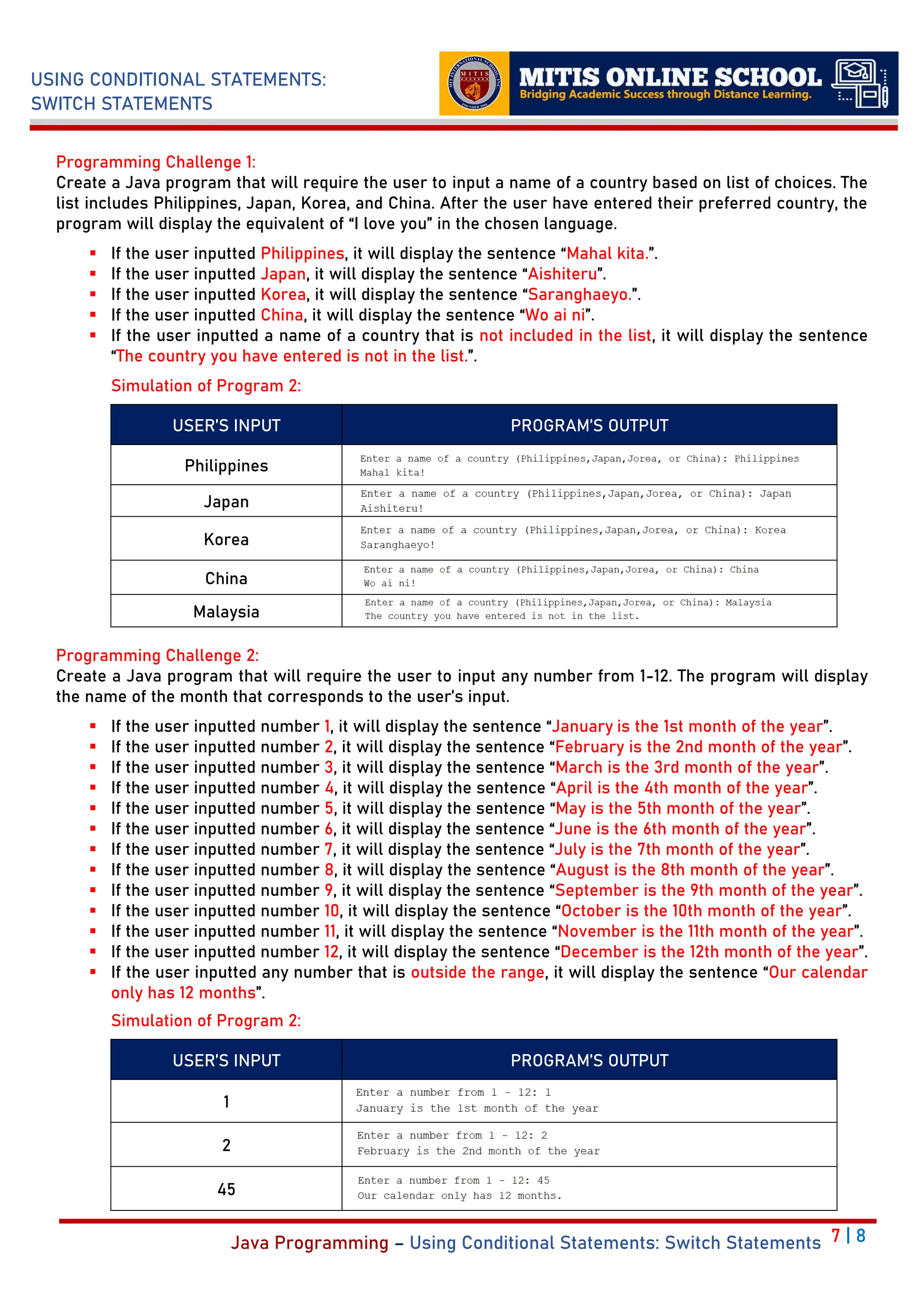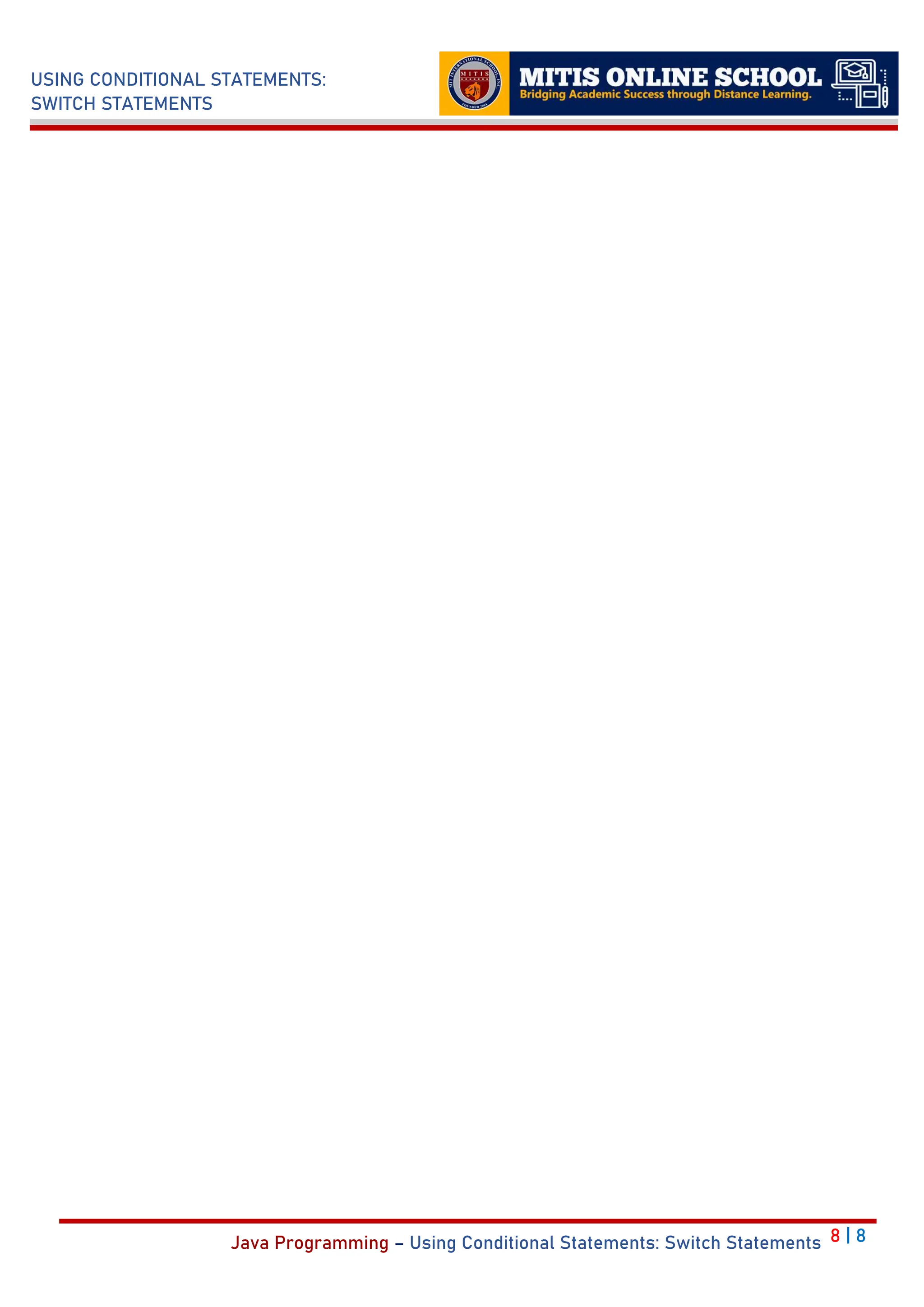The document explains the concept and application of conditional statements, particularly focusing on switch statements in Java programming. It covers how to compare operands using truth tables, comparison operators, and provides example programs that demonstrate how to implement switch statements for user input scenarios. Additionally, it includes programming challenges to reinforce the understanding of this concept.







